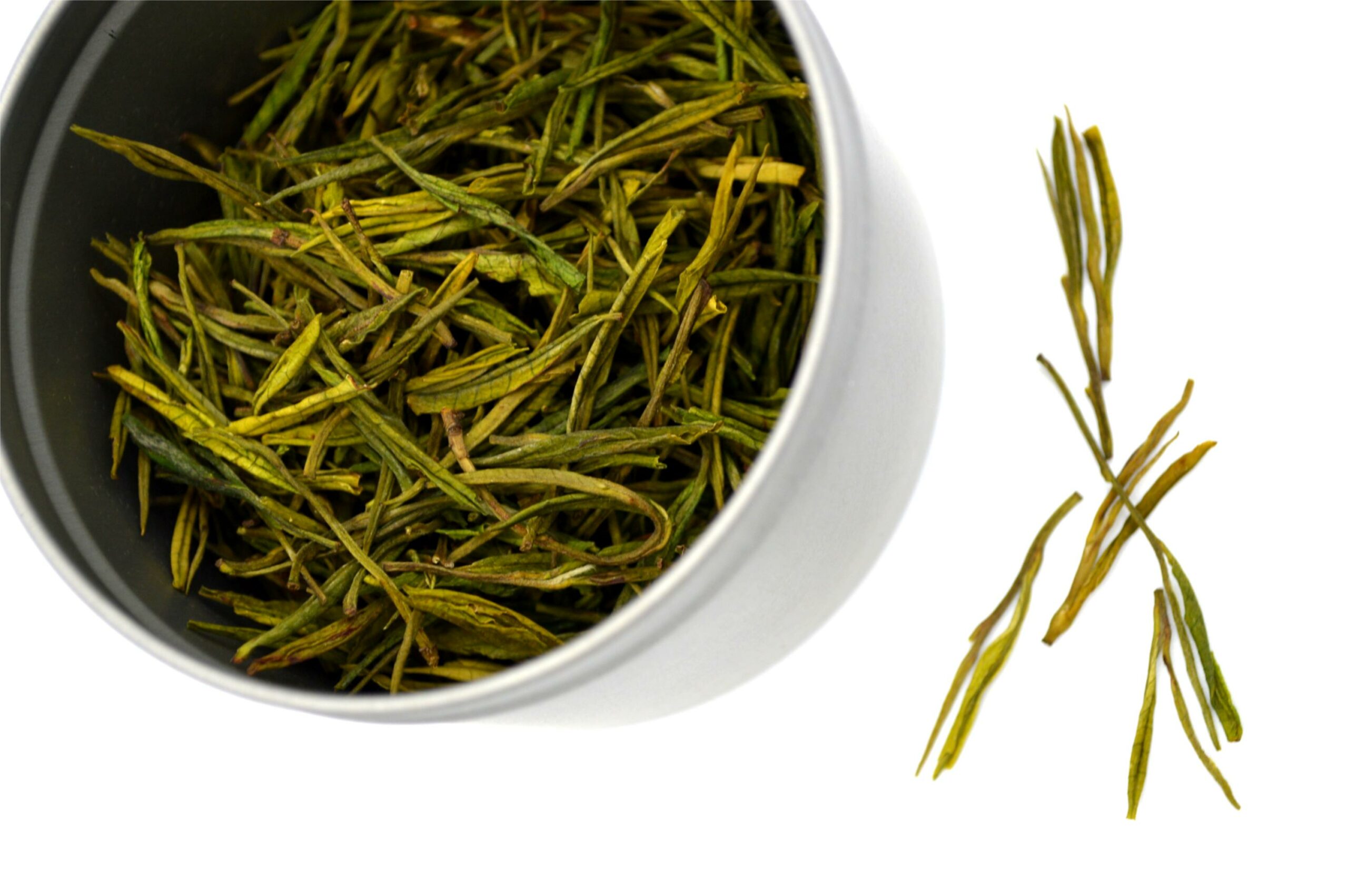Description
Zhejiang, Jiangsu and Anhui Tea Workshop
Origin: Huzhou, Zhejiang province
Harvest time: 2021 spring before the Qingming Festival (Ming Qian)
Material: tender bud and 1 leaf
Grade: 2 Level
Method:
use 80’C water and covered tea bowl or glass to brew 3 rounds, Tea:Water 1:50
- -dry tea is light greenish yellow, veins of the leaves are green, the leaves are thin, and the shape is tight and thin, look like phoenix feathers
- -pure fragrance
- -taste is strong and mellow and the aftertaste is sweet
- -soup is yellow, clear and bright
- -wet tea is jade white and lustrous, veins of the leaves are green, tender and even, whole flush
Introduction:
Anji white tea belongs to the “green tea” category, and is a rare albino variety. Its history originated from the “Tea Classic” written by Lu Yu in the Tang Dynasty and the “Grand View of Tea Theory” written by Zhao Ji, Emperor Huizong of the Song Dynasty. After that, no white tea was discovered for more than 350 years until the Ming Dynasty. Until 1930, dozens of wild white tea trees were discovered in Malinggang, Xiaofeng Town, Anji County, and later developed from wild mother trees to 170000 mu of tea sea.
“The tender leaves from the branches are as white as jade, and after baking, they are yellowish, which is the product of the local Jinguang temple.” it was recorded in the annals of the County, and later disappeared. Anji white tea is a mutant variety of tea. The tender leaves in spring are pure white, and turn to white and green when they are old in spring, and turn to full green in summer. In 1982, during the general survey of agricultural resources in Zhejiang Province, another white tea tree with more than 100 years old was found on the high mountain 800 meters away from Daxi village, Tianhuangping town. Its tender leaves are pure white, only its main vein is slightly green, and it seldom bears seeds. At that time, technicians Liu Yimin and Cheng Yagu from the County Forestry Institute successfully cut cuttings and bred them on April 4. This valuable tea variety has been protected by the goverment scientific research personnel and succeeded in the asexual reproduction. Later, it was bred into “Baiye No.1” variety. It is a valuable and rare variety of tea trees, the content of amino acids is 6.19- 6.92%, twice as high as that of ordinary tea, and the content of tea polyphenols is 10.7%.
Each process of manual roasted Anji white tea has special requirements. The killing green and rolling of Anji white tea requires strict temperature and humidity requirements, requiring a high hand feel and manipulation. Anji White Tea is characterized by its whiteness, liveliness, aroma, freshness, and clarity. The tea soup has a clear and transparent color, a delicious taste, and a high and long-lasting aroma. According to its processing procedures including roasting and rolling, Anji white tea should be considered strictly as a baked green tea, only because this variant’s new sprouting leaves are jade white, people call it white tea. Like other green tea processes, after withering, Anji white tea leaves (1 shoot and 1 leaf ) should be roasted, gently dried and then frozen at 0- 5℃ to keep the jade color.
In springs, new sprouts and tender leaves’s colors are changing with the temperature, from bright yellow to jade white, and the leaf veins are emerald green, looking like a blossoming of Yulan magnolia. This phase is called the Flourishing white stage, one sprout and two leaves are the right shape to be harvest, after this phase, mature leaves turn to pea green, and new sprouts in summers and autumns are light green. Recent years researches show that, Anji white tea is a stable temperature-sensitive mutant from genetic mutations.
Dry tea is emerald green with light yellow color, wet fragrances are like grass and bean, tastes are sweet and fresh without any bitterness. Anji white tea‘s amino acid content is the double of other green teas, a low content of tea polyphenols makes it taste less bitter than other green teas. Wet leaves are extreme beautiful, jade white and lightly transparent blades with green leaf veins.




























